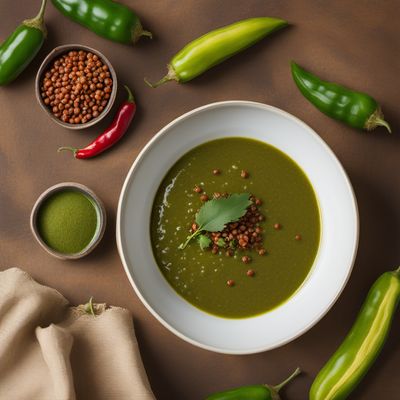
Ingredient
Cumin seed and similar-
The Earthy Spice
Cumin seed and similar spices are earthy and aromatic additions to various cuisines, adding depth and warmth to dishes. Whether used whole or ground, they offer a distinct flavor profile that is essential in many traditional recipes. With their rich history and versatility, cumin seed and similar spices have become pantry staples in kitchens around the world.
Origins and history
Cumin seed and similar spices have a long history that can be traced back to ancient civilizations. They were highly valued for their medicinal properties and were used in culinary preparations across the Middle East, India, and the Mediterranean. Cumin seed, in particular, has been a staple in Indian and Mexican cuisines for centuries. Today, cumin seed, along with spices like coriander, fennel, and caraway, are widely cultivated and used in various global cuisines.
Nutritional information
Cumin seed and similar spices are a good source of iron, manganese, and antioxidants. They also contain beneficial compounds like cuminaldehyde, which may have anti-inflammatory and digestive properties. However, they are typically used in small quantities, so their nutritional impact is relatively low.
Allergens
Cumin seed and similar spices may cause allergic reactions in individuals who are sensitive to them. Common symptoms include skin rashes, itching, and respiratory issues. It is advisable to use caution and consult a healthcare professional if you suspect an allergy.
How to select
When selecting cumin seed and similar spices, look for whole seeds or ground spices that are fresh and aromatic. Whole seeds should be firm, plump, and free from any signs of moisture or mold. Ground spices should have a vibrant color and a strong aroma. Opt for reputable brands or sources to ensure quality and authenticity.
Storage recommendations
To maintain the freshness and flavor of cumin seed and similar spices, store them in airtight containers in a cool, dark place away from heat and moisture. Ground spices should be used within six months to a year, while whole seeds can last for up to two years. Grinding whole seeds just before use can help preserve their aroma and potency.
How to produce
Cumin seed and similar spices can be grown at home by planting seeds in well-drained soil and providing ample sunlight. They are relatively easy to grow and can be harvested when the seeds are mature and dry. However, it is important to note that the flavor of homegrown spices may vary from commercially available ones.
Preparation tips
Cumin seed and similar spices are incredibly versatile and can be used in a wide range of dishes. They are commonly found in spice blends like garam masala, curry powder, and chili powder. They are essential in Indian, Mexican, Middle Eastern, and North African cuisines, where they are used in curries, stews, soups, rice dishes, and roasted meats. They also pair well with vegetables, legumes, and grains, adding depth and warmth to vegetarian and vegan recipes.
Culinary uses
Cumin seed and similar spices are widely available and cultivated in regions like India, the Middle East, Mexico, and the Mediterranean. They can be found in most grocery stores, supermarkets, and specialty spice shops.

